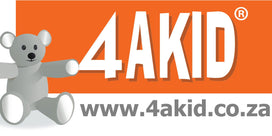Shaken Baby Syndrome (SBS) is a serious form of child abuse that occurs when a baby or young child is forcefully shaken. This violent motion can cause severe brain damage, permanent disability, or even death. Understanding SBS is essential for protecting children and raising awareness about the importance of gentle and safe childcare practices.
What is Shaken Baby Syndrome?
Shaken Baby Syndrome, also known as Abusive Head Trauma (AHT), happens when an infant or young child is shaken with force. Since babies have weak neck muscles and relatively large heads, the sudden whiplash motion causes their fragile brain to move inside the skull, leading to bleeding, swelling, and bruising.
SBS often occurs out of frustration, especially when caregivers are overwhelmed by a baby’s crying or behaviour. However, it’s a preventable tragedy that can have devastating consequences.
How Does Shaken Baby Syndrome Occur?
Shaking typically happens when a caregiver loses control and shakes the child violently, often in an attempt to stop crying or in frustration. The force of the shaking causes the baby’s head to jerk back and forth, which their delicate body isn’t equipped to handle.
This motion can lead to:
- Brain swelling (cerebral oedema)
- Bleeding in the brain (subdural haemorrhages)
- Retinal bleeding (bleeding behind the eyes)
- Fractures of the ribs, skull, or other bones
Even a few seconds of shaking can cause irreversible damage.
Who is at Risk of Shaken Baby Syndrome?
Infants and young children under the age of two are most vulnerable because their neck muscles are not fully developed, and their brains are still forming. However, children up to five years old can also be affected in severe cases.
Signs and Symptoms of Shaken Baby Syndrome
The symptoms of SBS may vary depending on the severity of the injury. Common signs include:
-
Physical Symptoms
- Vomiting
- Poor appetite or difficulty feeding
- Lethargy or difficulty staying awake
- Breathing problems
- Seizures
-
Neurological Symptoms
- Irritability or excessive crying
- Trouble focusing eyes or tracking movement
- Limp body or stiffness
-
Severe Symptoms
- Unresponsiveness or coma
- Bluish or pale skin
- Enlarged head due to brain swelling
If you suspect a baby has been shaken, seek emergency medical care immediately. Delaying treatment can result in permanent damage or death.
Long-Term Effects of Shaken Baby Syndrome
Survivors of SBS may face life-altering challenges, including:
- Cognitive impairments
- Vision or hearing loss
- Developmental delays
- Physical disabilities such as paralysis
- Behavioural or emotional issues
- Seizure disorders
The severity of these outcomes depends on the intensity of the shaking and how quickly the baby receives medical intervention.
Prevention of Shaken Baby Syndrome
Preventing SBS starts with education and awareness. Here are key strategies to ensure your child’s safety:
1. Educate Caregivers
Ensure that everyone caring for your child understands the dangers of shaking a baby. This includes parents, relatives, babysitters, and childcare providers.
2. Learn to Handle Crying
Crying is a normal part of infancy. Babies cry to communicate hunger, discomfort, fatigue, or the need for attention. If you feel frustrated by a baby’s crying:
- Place the baby in a safe place (like a crib) and step away for a few minutes.
- Take deep breaths or call someone for support.
- Remember, it’s okay to let the baby cry if you need a moment to calm down.
3. Promote Positive Parenting
Use gentle methods to soothe your baby, such as rocking, singing, or offering a pacifier. Avoid harsh discipline or actions that could harm the child.
4. Seek Help if Overwhelmed
Parenting can be overwhelming, especially for first-time parents. Don’t hesitate to ask for help from family, friends, or support groups. If stress becomes unmanageable, consider speaking to a healthcare provider or counsellor.
5. Raise Awareness
Talk to others about SBS to spread awareness. Community education can help prevent these tragic incidents.
What to Do If You Suspect Shaken Baby Syndrome
If you suspect that a baby has been shaken, act immediately:
- Call emergency services or take the child to the hospital.
- Inform medical professionals of your concerns so they can provide the appropriate care.
- Contact child protective services if you suspect ongoing abuse.
Timely intervention can save a child’s life and prevent further harm.
Conclusion
Shaken Baby Syndrome is a preventable but devastating condition that highlights the importance of patience, education, and awareness in childcare. By understanding the risks, recognising the signs, and learning how to cope with frustration, we can create a safer environment for our children. Let’s work together to protect the most vulnerable members of our society.
FAQs
1. Can shaking a baby accidentally, such as during play, cause SBS?
Gentle play, such as bouncing a baby on your knee, does not cause SBS. However, vigorous shaking or rough handling can result in severe injuries.
2. How can I calm a crying baby without shaking them?
Try soothing techniques like rocking, swaddling, feeding, or using white noise. If the crying continues, ensure the baby is fed, clean, and comfortable, then step away if needed to manage your frustration.
3. Are there other causes of symptoms similar to SBS?
Yes, some medical conditions, like infections or metabolic disorders, can mimic SBS symptoms. That’s why it’s critical for medical professionals to investigate thoroughly.
4. How can I educate others about SBS?
Share resources from reputable organisations, attend parenting workshops, or organise awareness campaigns in your community.
5. Is SBS a common occurrence?
While preventable, SBS affects thousands of children globally each year. Raising awareness and educating caregivers can significantly reduce these numbers.










